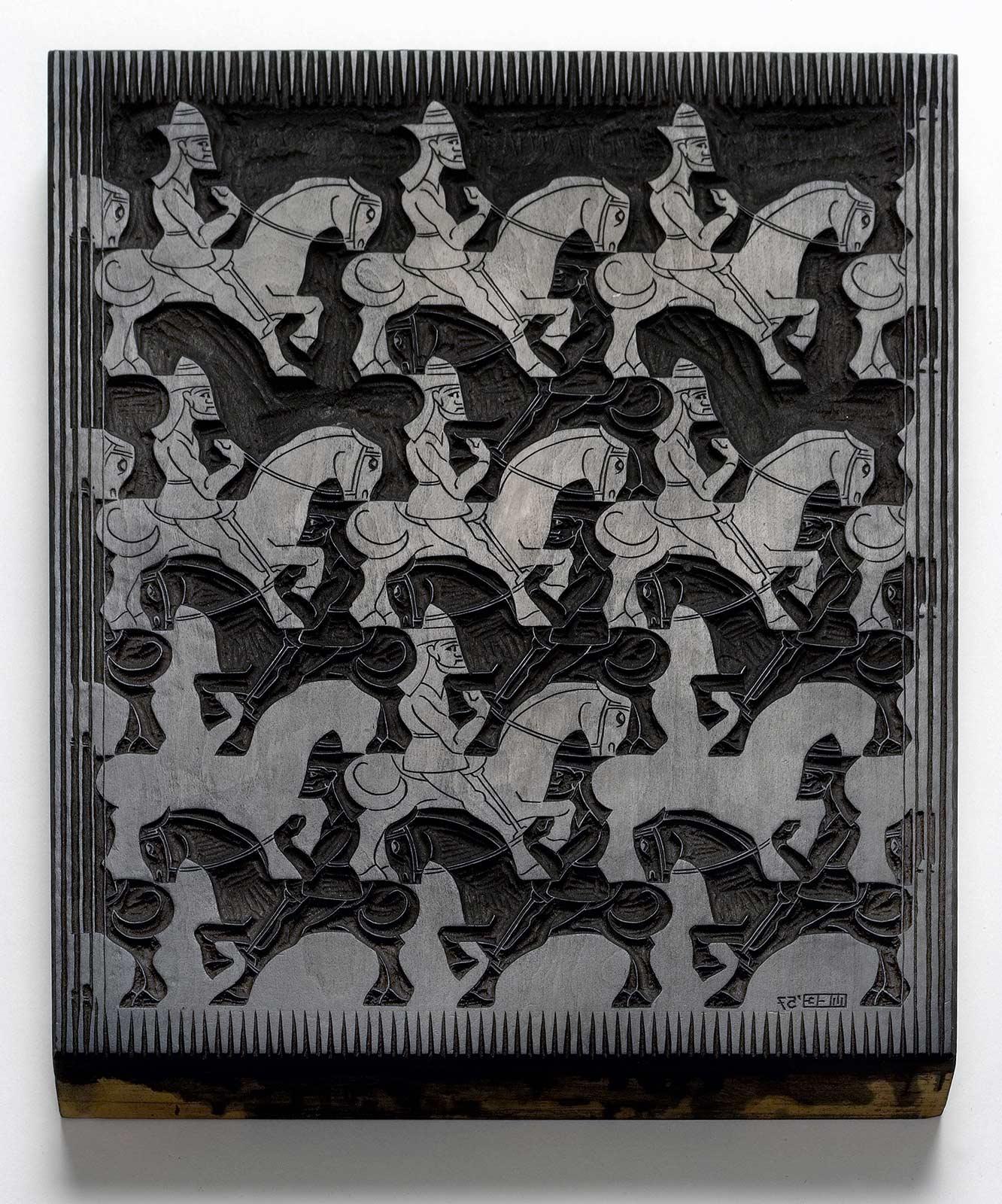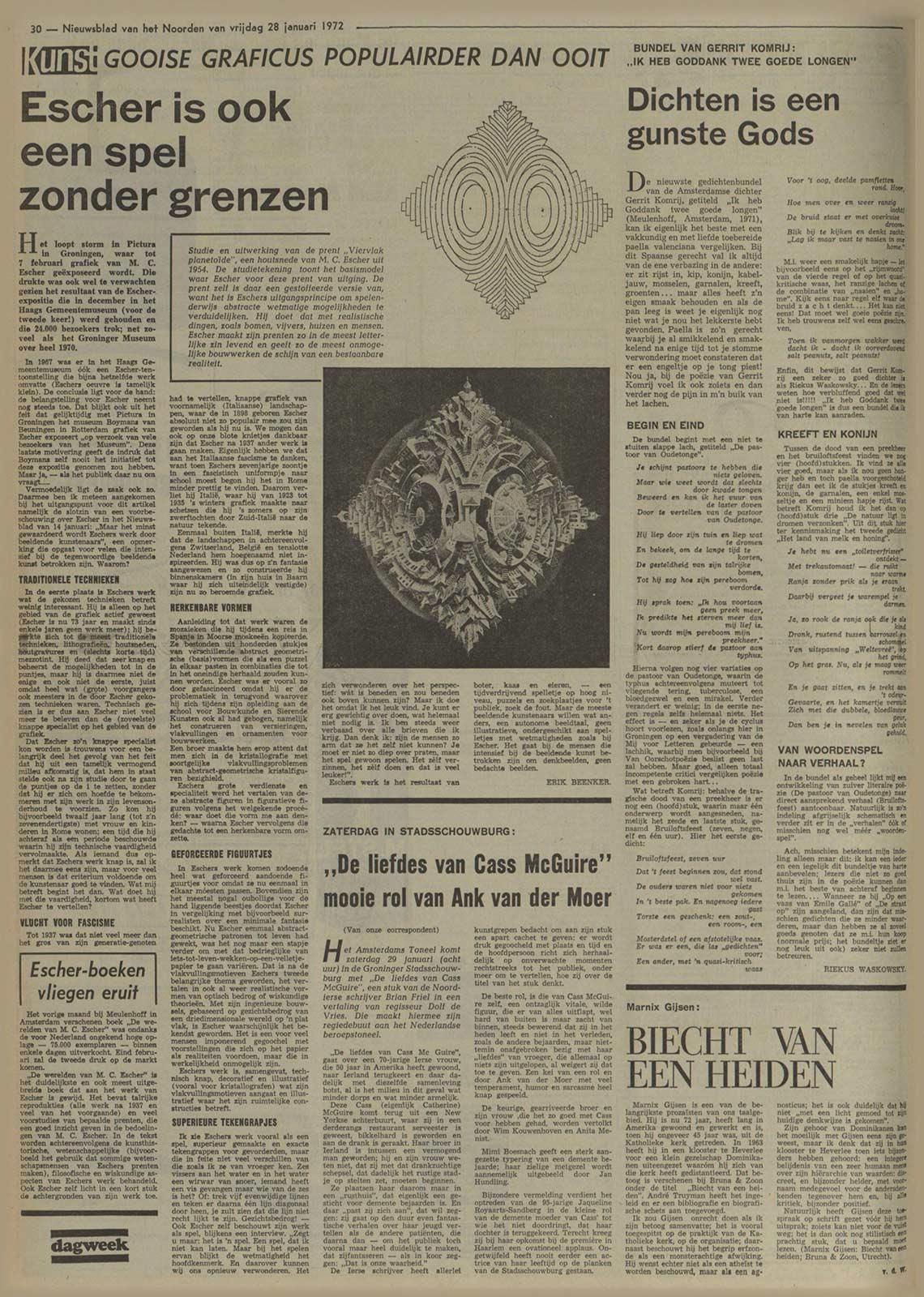

Last week I wrote that for years Escher was not regarded in a positive light by art critics. Yet he himself was always his own harshest critic. There are certainly exceptions, but he was often dissatisfied with his latest creation. This varied from ‘this is not quite good enough’ and ‘there should be more to it than this’ to ‘this really is a total failure’. His dissatisfaction spilled over again at the end of October 1955.
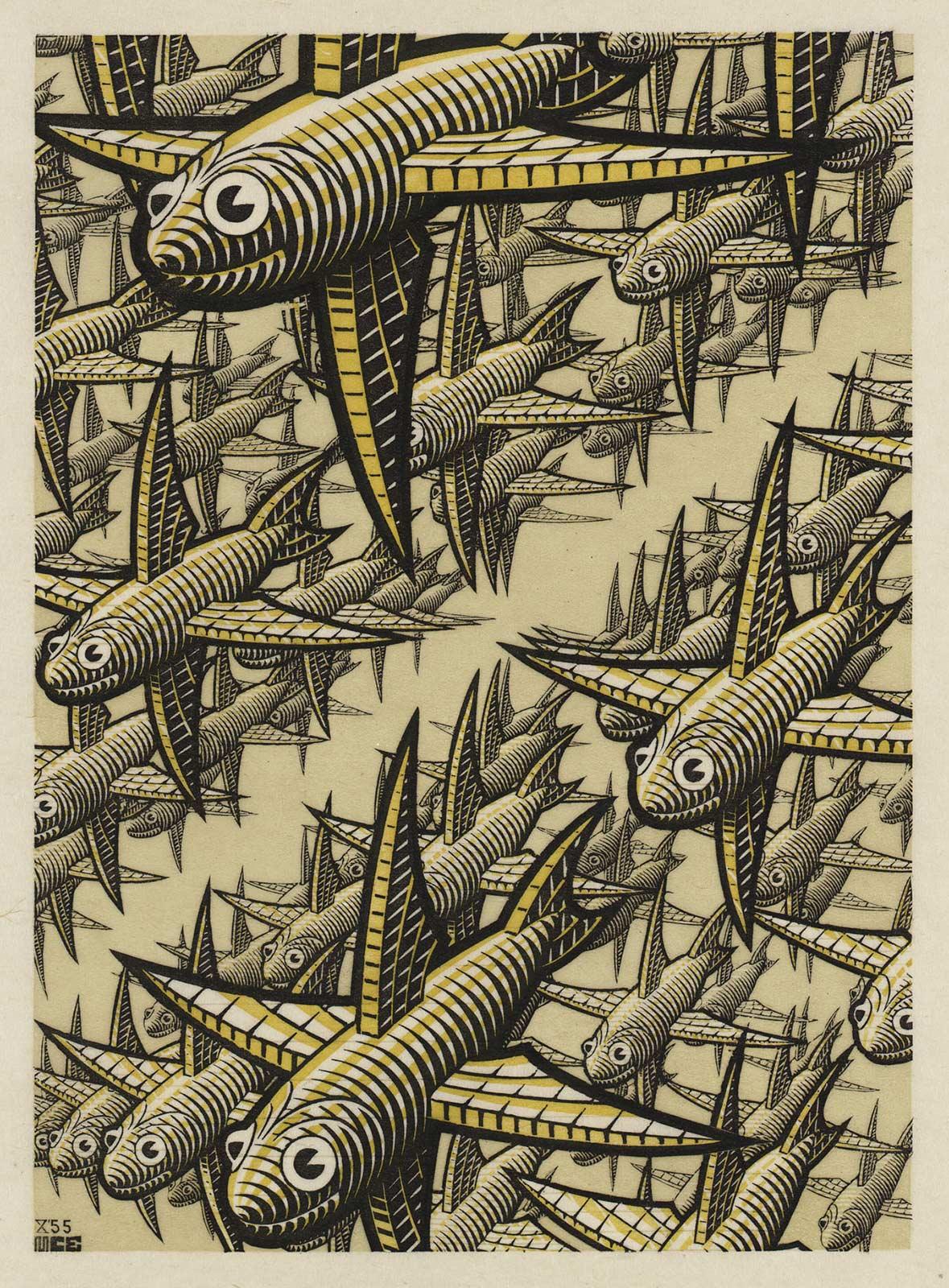
In a letter to his son Arthur he wrote about his latest work Depth:
‘After almost endless effort I finished my new fish print. Although I am absolutely not satisfied with it (the simplicity of the “depth suggestion” to be expressed is one of the most difficult tasks I have ever set myself), I cannot consider it completely unsuccessful either. The feeling that I have completed it to the best of my ability is no guarantee of quality, but it does give me some peace of mind. I will send you a print of it next Monday, shall we say: as a special birthday gift from me. You will also get some sweets or something, by slow boat, but a light package like this can be send through the air.'*
In his book The Magic Mirror of M.C. Escher, Bruno Ernst defines three main themes in Escher’s work, subdividing each of these into three categories.
An overview would look as follows:
1. Spatial structure
With subcategories:
- Landscape prints (e.g. Castrovalva)
- Penetration into different worlds (e.g. Hand with reflecting sphere)
- Abstract, mathematical solids (e.g. Tetrahedral planetoid)
2. Flat surface structure
With subcategories:
- Metamorphoses (e.g. Development II)
- Cycles (e.g. Reptiles)
- Approaches to infinity (e.g. Circle Limit IV)
3. Pictorial representation of the relationship between space and flat surface
With subcategories:
- The essence of representation (e.g. Dragon)
- Perspective (e.g. Other world)
- Impossible figures (e.g. Belvedère)**
In addition to this thematic classification, Ernst also produced a chronological one:
1922-1937: Landscape Period
1937-1945: Metamorphoses Period
1946-1956: Period of perspective prints
1956-1970: Period of Approaches to infinity***
This is far from definitive. The different themes occur in different periods and in each period Escher focused on several themes at the same time. Nonetheless, it does present us with a workable starting point from which to analyse his work. Depth is a print that belongs to the theme ‘Pictorial representation of the relationship between space and flat surface’, and to the category ‘Perspective’. Chronologically it falls into ‘1946-1956: Period of perspective prints’.
The print comes from the end of that period, but in fact Depth has a very traditional approach to perspective. He suggests the endlessness of space by putting the fish on three axes that adhere nicely to the laws of perspective. He did something similar in Cubic Space Division. In a print like High and Low, the highlight of this period, he juggles with vanishing points and converging curves. In the letter to Arthur, Escher explains how he has tried to bolster the depth effect in Depth:
'I fear that you will not be overly impressed with the result. Perhaps to cushion the blow of a scathing opinion, allow me to say the following: as a motif I could only use a very simplified form of a fish, more of a symbol than a real fish, because the “thing” repeats itself about eighty times, each time from a slightly different angle. I tried to suggest the intended depth effect in all sorts of “ways”, each of which had to be studied individually from a technical perspective and be accessible. At the risk of boring you, let me follow with some methods on how to suggest depth.
- Contours. The thickness of the contours decreases as the distance increases.
- A network of lines. Each fish is, in principle, formed of the same number of lines (for example, on average 32 curved hatchings fill the spindle-shaped body).
- Rhythmic positioning of each fish at the intersections of a cubic three-axis system. To draw extra attention to that three-axis system (I first made some desperate attempts to arrive at a less ordinary division of space, for example the tetra-octahedral option and others, all of which prove to be too unusual to evoke a strong suggestion in the untrained observer), I accentuated those three axes in each animal, as a spatial cross shape. This organically gives rise to nice series (a lot of them) of three or four obliquely placed, contiguous objects; you can see the same truncation in the trees of a forest planted according to square, rectangle, or other method.
- The colour of the “black” plank (actually dark brown) is “full” only in the front fish, i.e. as dark as possible at the given strength of colour mixing. By pressing less hard as the distance increases, the colour becomes less full; the same result is achieved by multiplying fine hatchings to the back, not in print, but in the engraving itself.
- The two colours. Near a “warm” one, far away a “cold” one. Hence as the depth increases, the warmth decreases and the cold colour increases.
There might be more systematicities or systematisations, but this is quite enough I would say. Can such a methodically designed case still be considered “art”? For that you should first know what art is, and I do not know.'*
In his biography of Escher, author Ernst Hazeu notes that Depth is a reference to the war. On 14 January 1945, Escher had started a war diary. Inspired by the translation of Homer’s Odyssey by the poet P.C. Boutens, he wrote 360 hexameters about his experiences. On 19 January he writes about the ‘ever rising rumble in the sky’, the ‘devilish thundering threats’ and the ‘invisible birds of vengeance’ that will drop their ‘murder weapons’. Not here, not aimed at you but ‘further, much further’ they will unleash their cargo causing ‘death, destruction and mutilation’.
Depth is thought to be a reference to the many planes that passed overhead during the war. German Doerniers and Junkers taking off from and landing at the nearby airport Soesterberg. And the British Lancasters, Halifaxes and Liberators on their way to Germany. These birds of vengeance with their deadly load.****
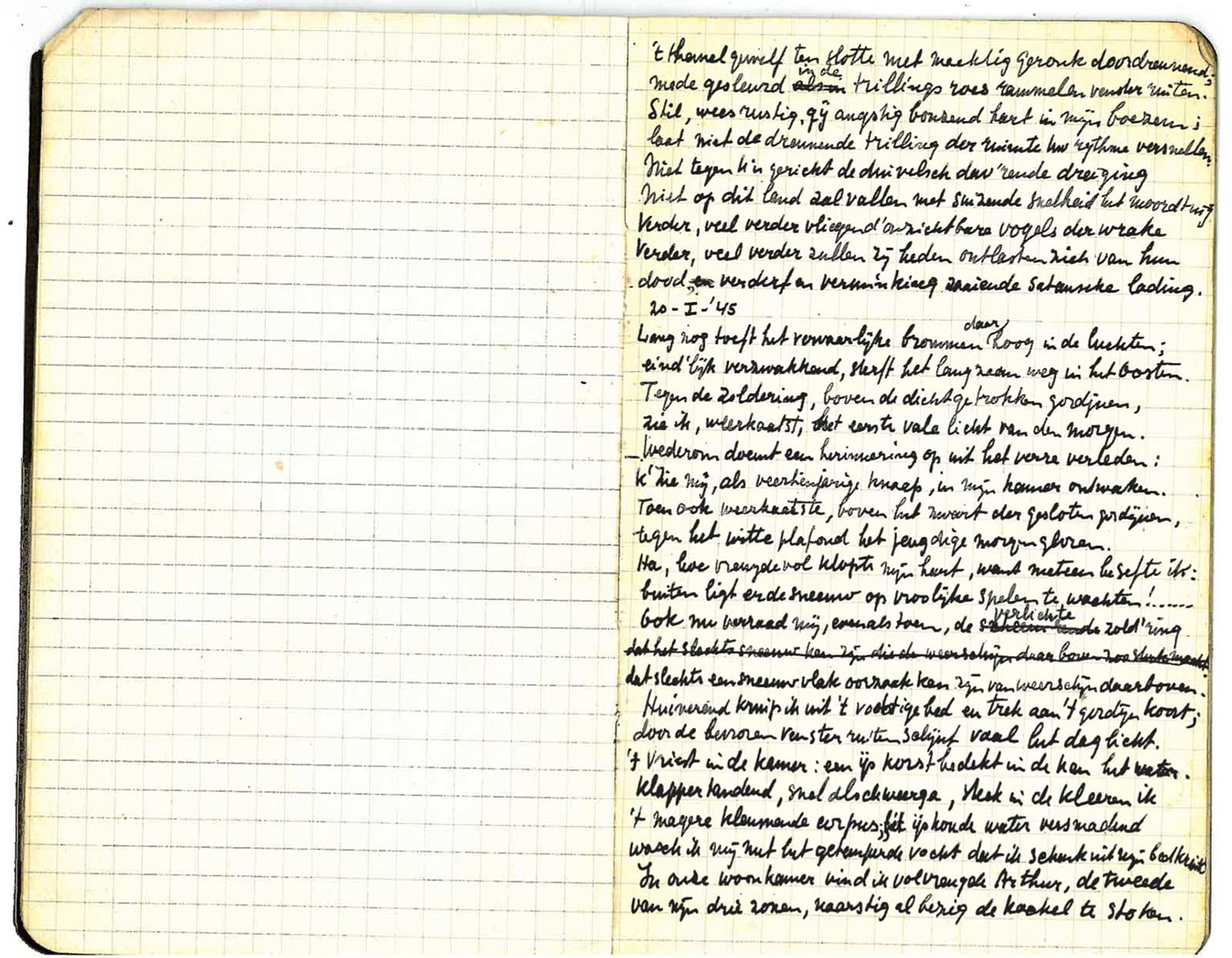
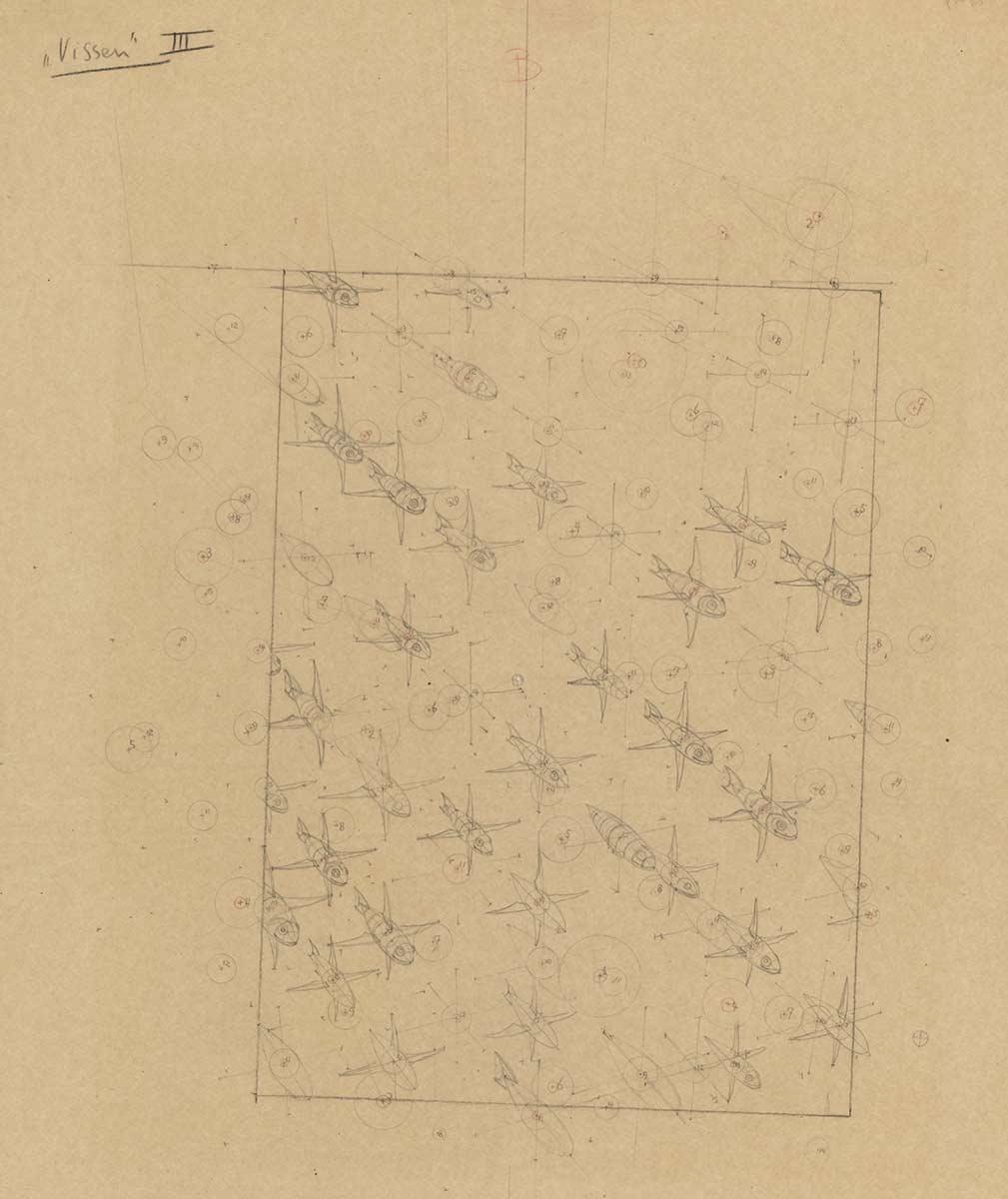
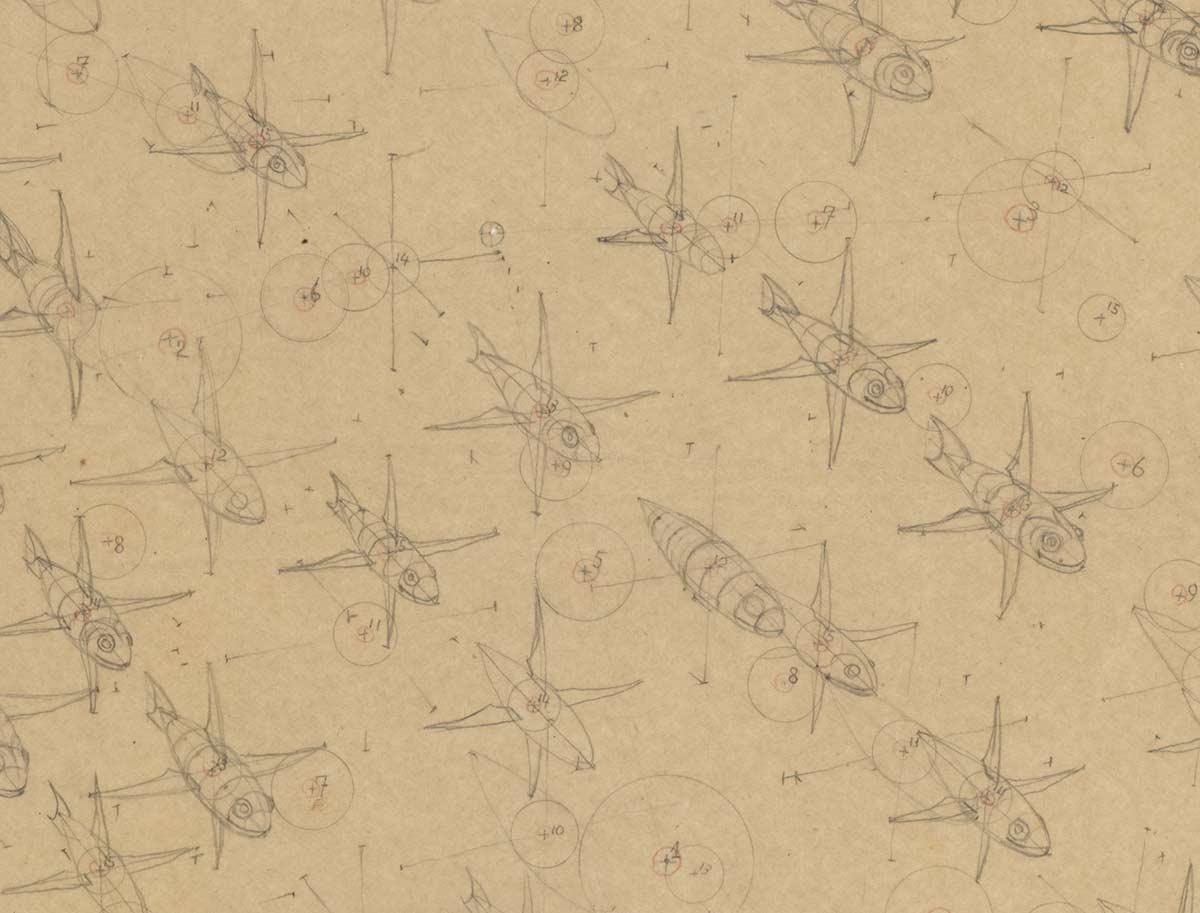
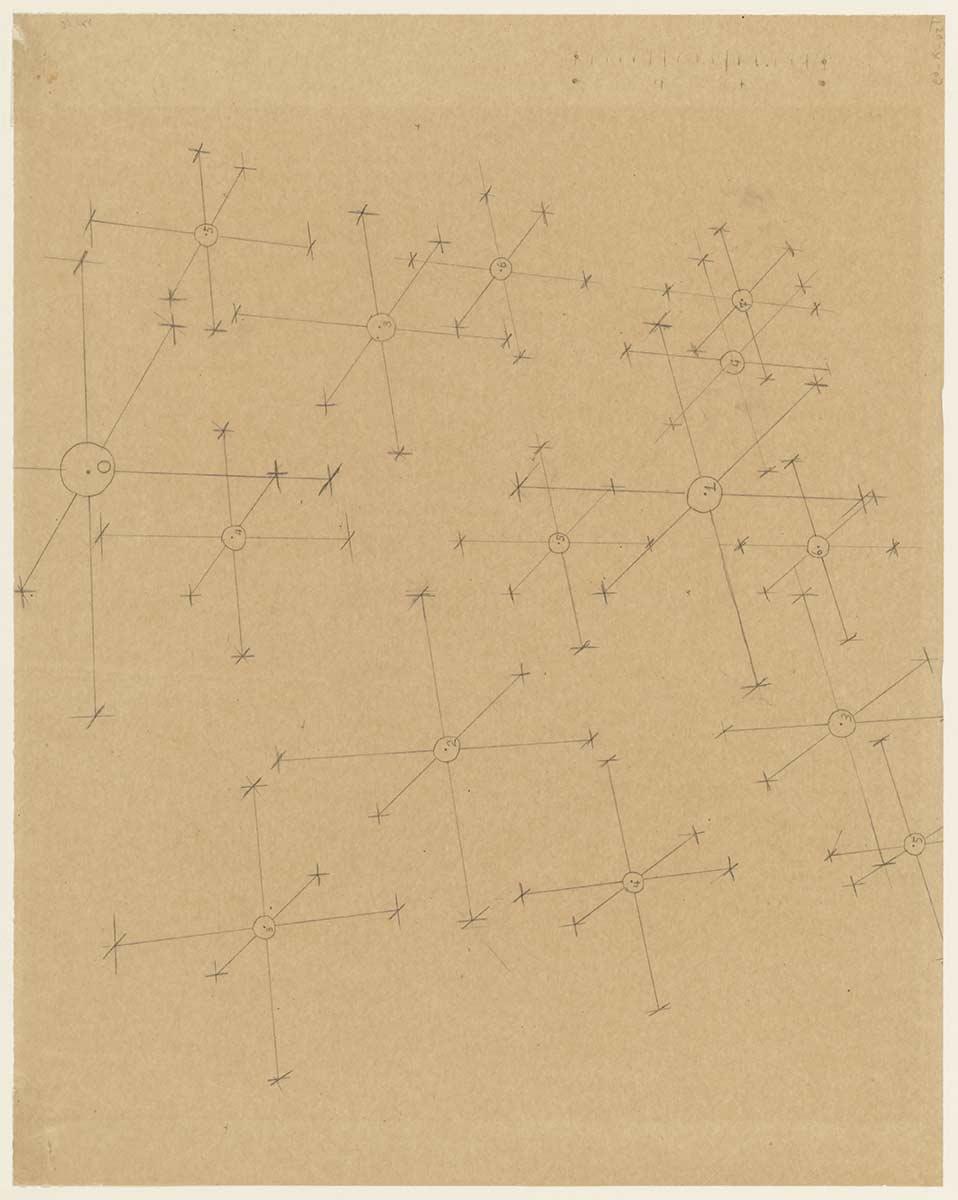
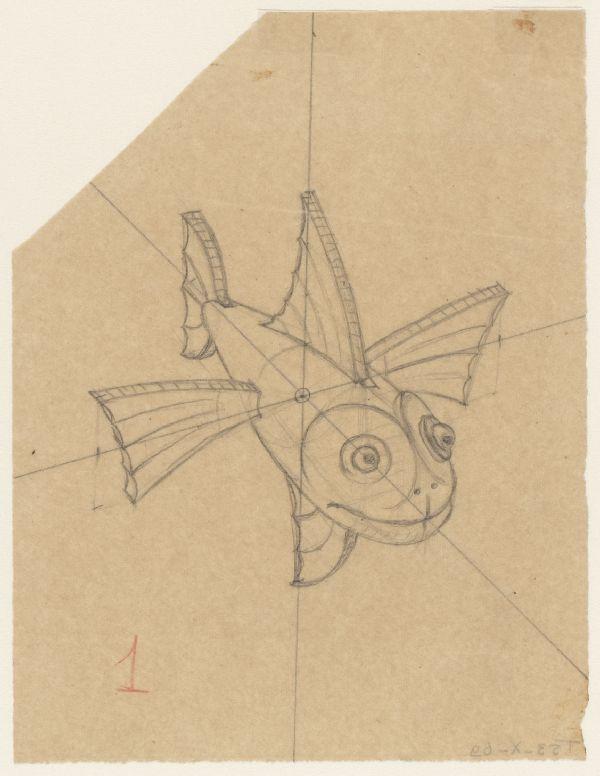
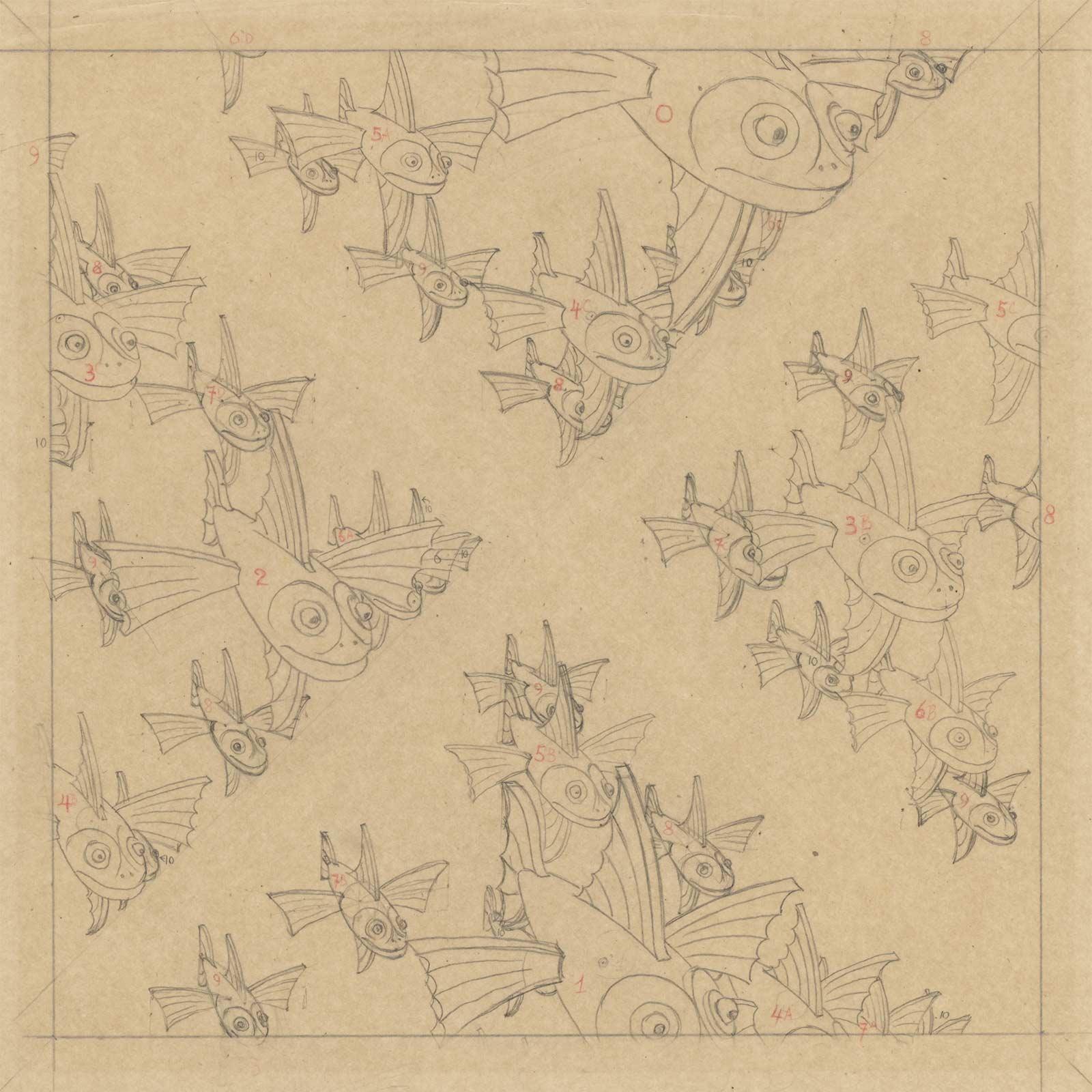
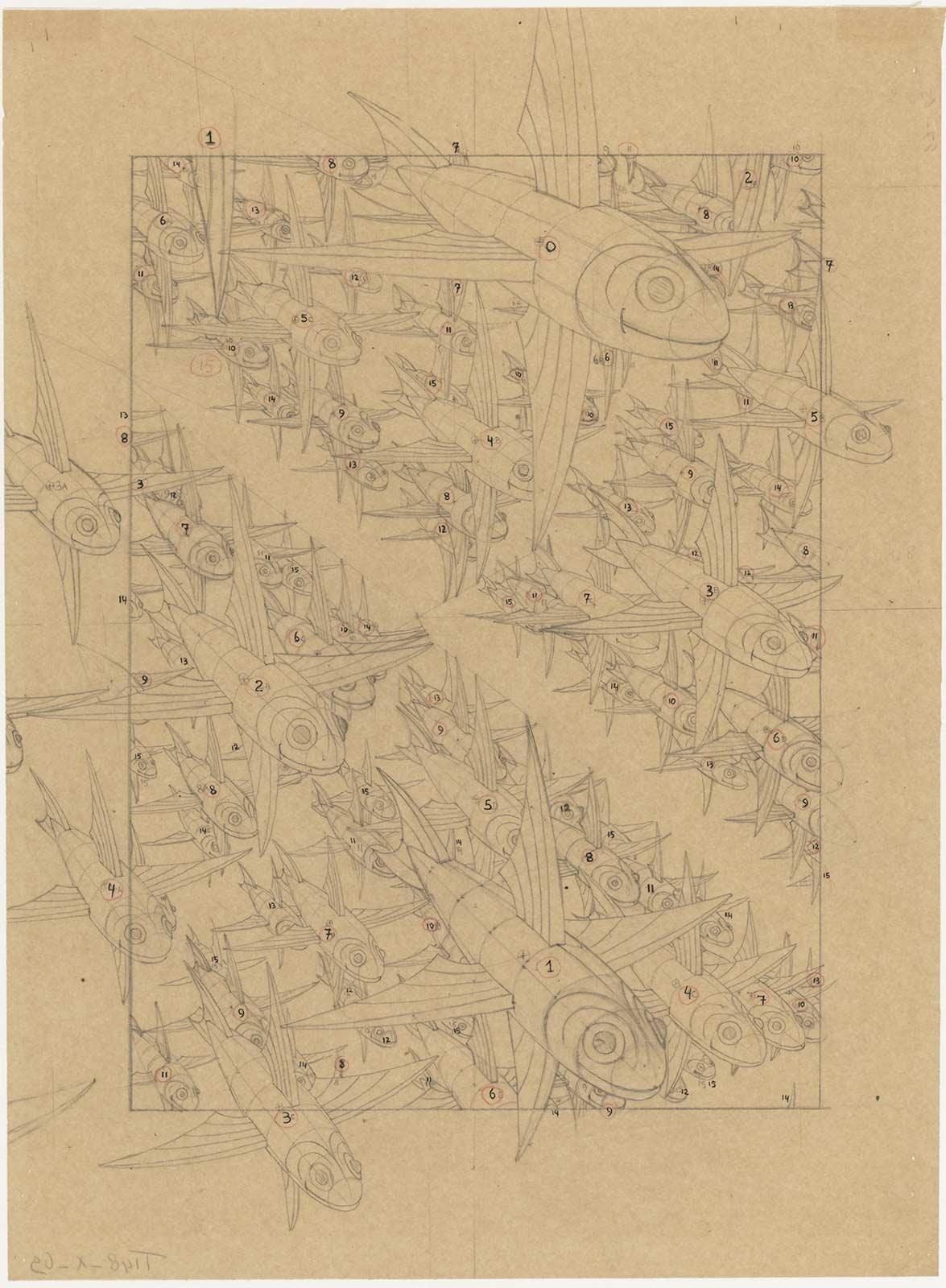
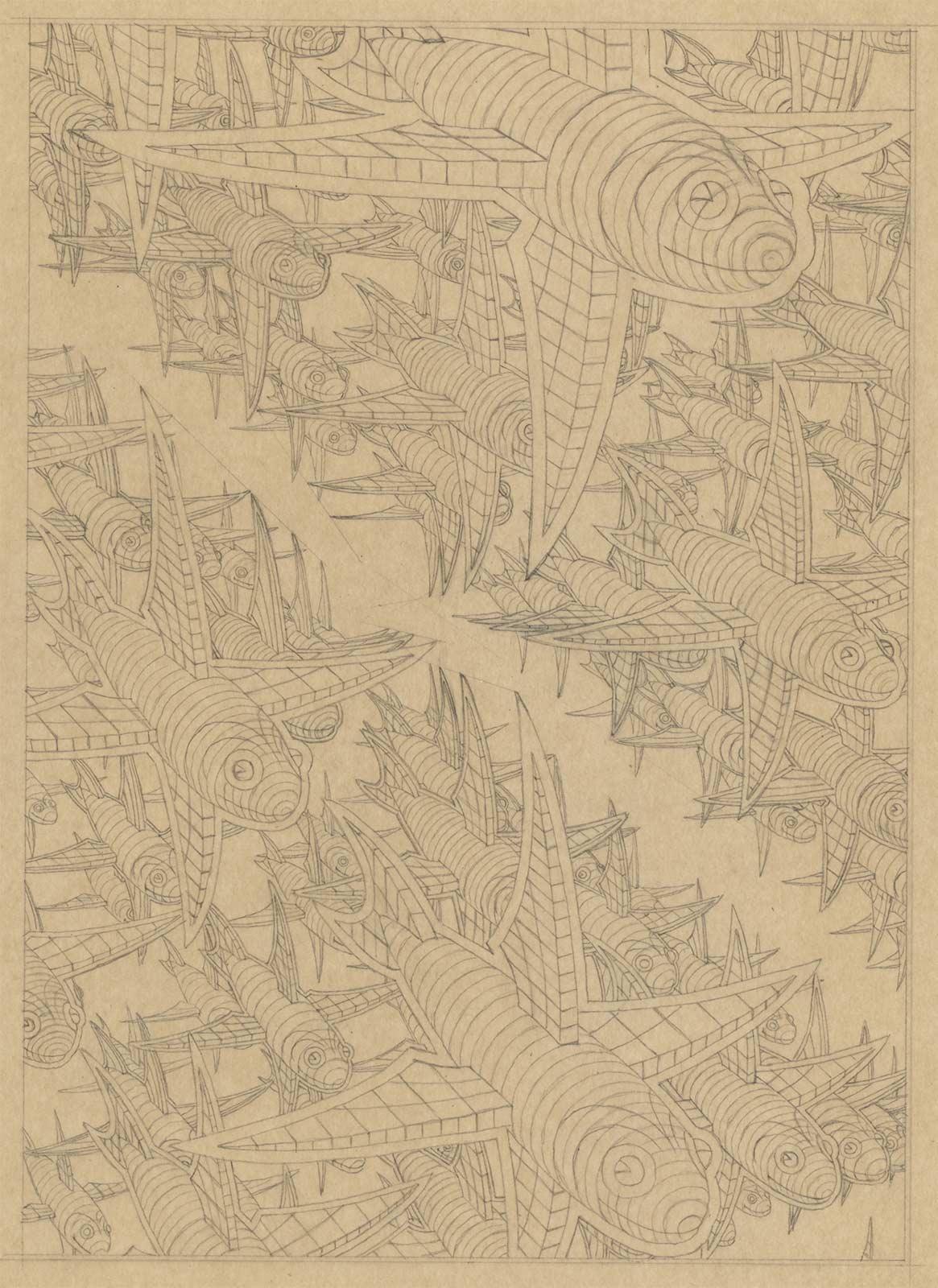
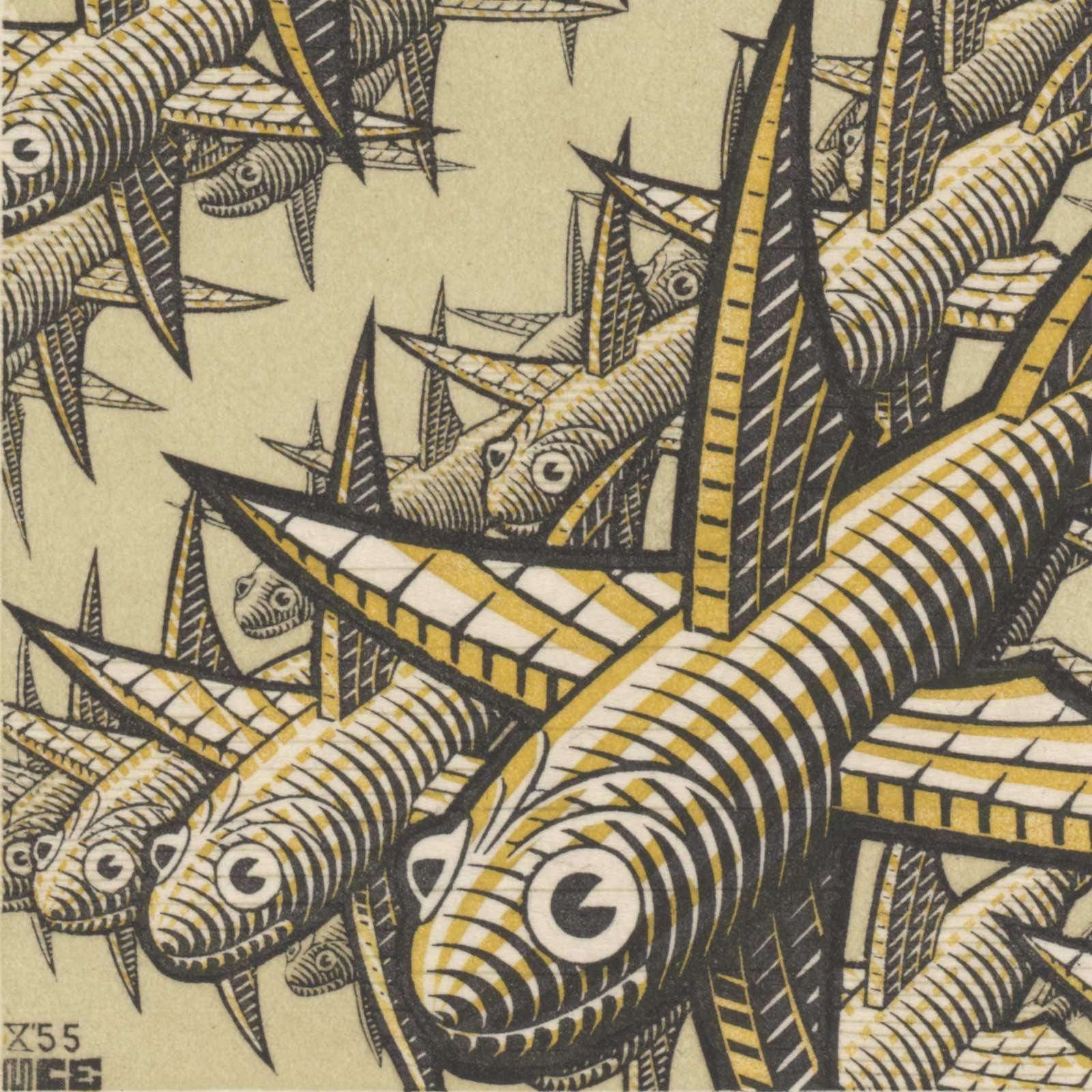
A mirrored version of the final study and the resulting print. Compare them by moving the slider.
Source
[*] M.C. Escher, His Life and Complete Graphic Work, edited by J.L. Locher, Abradale Press, 1982, page 84
[**] en [***] Bruno Ernst, De toverspiegel van M.C. Escher, Taschen, 1978, blz. 24-27
[****] Wim Hazeu, M.C. Escher, Een biografie, Meulenhoff, 1998, pp. 291-294
More Escher today

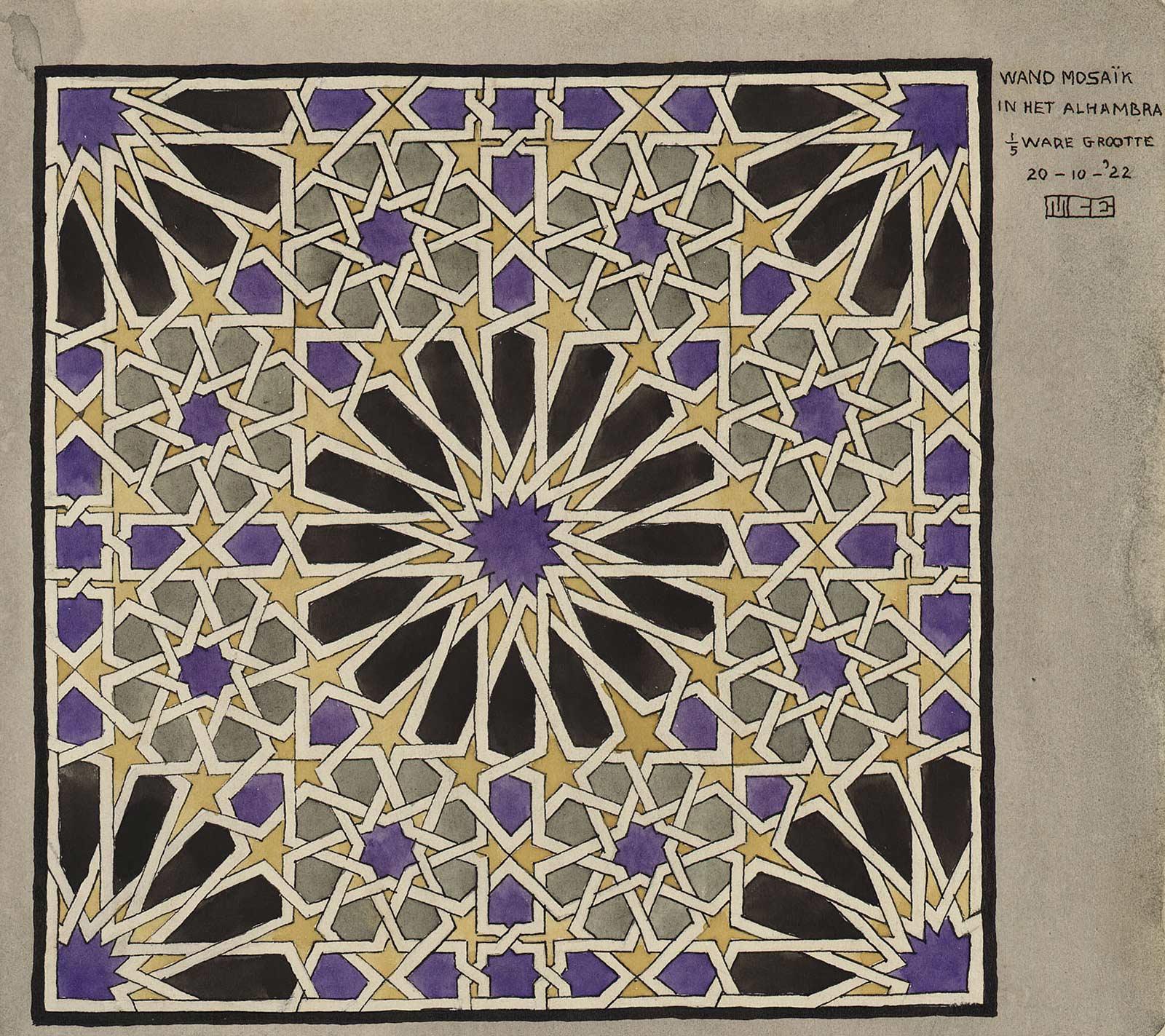
Wall mosaic in the Alhambra
